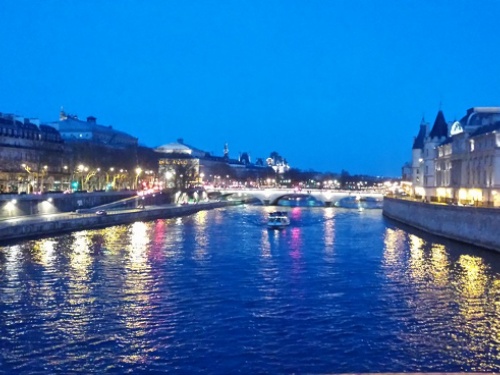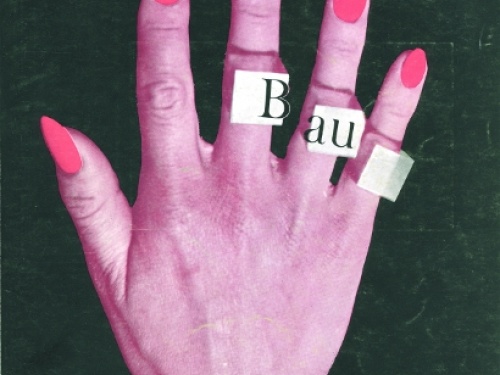MA in the Contemporary
The course brought together diverse material; the philosophy of Agamben, texts about historical subcultural London, the art produced in Tahir Square during the Egyptian Revolution. Weekly seminars took the form of group discussions, artists talks, a tour of a current exhibition etc.
I came to the course with a feeling that contemporary art was the dominating and exclusive force within western art but my ideas were unfounded. Looking at art, or even just life, in relation to late capitalism was eye opening and I have since become more engaged in politics. This has changed how I operate within my own painting practice and has made me question the social responsibility of art more generally.
Additionally, membership to the ICA means you have access to the events happening there. I attended several free artists talks; they were completely full and a place to chat to people with similar interests.
- Eimear F.Friers
The ICA launched its first MA in partnership with the University of Kent in September 2013. The MA in the Contemporary is an interdisciplinary programme in the field of contemporary culture that gives students the opportunity to pick modules from a wide variety of disciplines across contemporary practice including: Literature, Creative Writing, Film, Drama, and History and Philosophy of Art.
Addressing key themes and issues in contemporary thinking and practice, students gain a deep understanding of the relationship between disciplines in the arts and an appreciation of the way in which interdisciplinary thinking makes it possible to grasp and respond to key issues in contemporary culture.
Co-taught by staff from the School of English, School of Music and Fine Art and School of Arts at the University of Kent and the Institute of Contemporary Arts, the seminars take place at both the Canterbury campus and at the ICA on the Mall.
‘Reading the Contemporary’ is the first module on the programme. Last autumn the students and I attended 9 seminars across the ICA and the University of Kent in hope of exploring what it means to read the contemporary period through its aesthetic practices.
Week 1
The first seminar led by Professor David Herd, the MA Programme Convenor and Director of the Centre for Modern Poetry at the University of Kent, introduced the students to two of the MA’s key texts, Giorgio Agamben’s What is the Contemporary? (2009) and State of Exception (2005) to explore what it means, in a theoretical sense, to think about our contemporary moment and to ask: Of whom and of what are we contemporaries? What does it mean to be contemporary?[1]
Week 2
At The Old Selfridges Hotel in Central London we visited the ICA’s former Off-Site exhibition: A Journey Through London Subculture: 1980s to Now. The exhibition was a group display of archival material that illustrated a perceived thread of creativity between the post-punk era and the present day. Students were given a tour of the exhibition by Associate Curator Juliette Desorgues and then took part in a discussion around what a ‘contemporary’ archive could look like. We debated over the transition of contemporary movements from underground networks in the 1980s, to what we know as mainstream culture today, and the potential of the archive in constructing new lineages and new histories.
Week 3
Professor Caroline Rooney’s fascinating seminar explored the art of protest and revolution. Looking closely at alternative political movements in the East and West from global youth mobilisation to Arab cultural activism, the group discussed ideas of collective agency and contemporary forms of revolutionary cultural consciousness. Drawing parallels between the London riots and Egyptian Revolution in 2011 we explored the role of protest and utopian thinking in constructing creative communities and artistic projects that facilitate opportunities for knowledge exchange.
Week 4
Led by ICA’s Curator Matt Williams, this seminar focused on key ICA exhibitions ranging from 1968 (when the ICA first came to the Mall) to the present day to explore the Institute’s programmatic history. Working through seminal texts such as John Berger’s Ways of Seeing (1972) we discussed the ‘art of looking’, the role of the contemporary curator and his/her relationship to artist and public. This was followed by a curator-led tour of the Lutz Bacher exhibition, Black Beauty (2013).
Week 5
Dr Hans Maes’ seminar got the students to consider the parallels between art and pornography. Drawing upon insights from many different disciplines, including philosophy, aesthetics and art history, we questioned as a group whether there could be an aesthetic experience of pornography and what the relations and frictions between these two practices might be.
Week 6
‘Talking about the Contemporary’ was a seminar led by myself and the ICA’s former Curator of Talks Antonia Blocker, that focused on the incorporation of pedagogy into curatorial practice and ‘talking’ and ‘discourse’ as art forms. The ICA has a rich history of an expansive talks programme that has pioneered a cross-disciplinary mode of talking about contemporary issues since its inception. From Reyner Banham, Maxwell Fry and Graham Sutherland in the 1940/50s to John Cage, JG Ballard, Salmon Rushdie, Germaine Greer and Jacques Derrida in the 70s/80s, the ICA has created a space outside of education to access important thinkers and to engage with complex discourse. As a group we discussed what the possibilities are to shift art from a monolithic position to something more open and dialogic. We asked: What kind of responsibility do cultural organisations have in relation to the use-value of its discourse? And what is the purpose of the conversation and how do we know if it is important?
Week 7
Back at Kent, the artist and academic Sarah Turner led a session around film as research. In exploring the interplay between abstraction and narration we looked at critical practice as an alternative means of engaging in critical concepts and theories around film and performance. This was followed by a screening of Sarah Turner’s 2009 film Perestroika: Reconstructed and resulted in a discussion around the developments and enhancements in knowledge and understanding achievable through practice.
Week 8
A week later we were back at the ICA, but this time in Cinema 2 with the ICA’s Associate Curator of Artists' Film and Moving Image, Steven Cairns. Steven began his seminar by giving students an overview of the Artist Moving Film Club (AFC) programme at the ICA. The session focused on moving image in relation to different sites of display from the auditorium to the gallery, to off-site spaces and beyond and the challenges of preserving and archiving work of this nature. After having viewed works by artist filmmakers Kenneth Anger and Liz Rhodes, the students considered different uses of film and video, from screen-based presentation to its activation in sculpture and performance, and discussed what role digital technology has played in the transformation of film curation in the modern gallery.
Week 9
The final session ‘Defining a Contemporary Institute’ was led by the ICA’s Head of Programme, Katharine Stout. Taking the students through a history of the ICA, from its first exhibitions in a hired space at the Academy Hall, Oxford Street, to its first permanent residence on Dover Street in the 1950s, to its current home on the Mall today, we discussed the significance of the ICA programme from the post-war period to the present day and how it reflected the cultural concerns of society at various moments. Exploring the diversification of today’s art institutions as places for exhibiting art, design, performance and film, telling and retelling histories and narratives, producing alterative educational frameworks and discursive platforms outside of academia, forming alternative archives, and facilitating new productions onsite and off-site, we asked “what do contemporary institutions stand for today?”.
Between May and June the students will be undertaking their internships at the ICA. Working in groups they will formulate and exchange research in response to their dissertation topics and develop provocations based on their research to be presented before an invited audience at the ICA in June.
Sumitra Upham
Associate Curator of Education at the ICA
Applications are now open for the 2014/15 MA in the Contemporary. If you are interested in applying or require further information regarding the programme please visit the University of Kent website.
[1] Giorgio Agamben, “What Is the Contemporary?” from What is an Apparatus? and Other Essays, trans. David Kishik and Stefan Pedatella (Stanford University Press, 2009)
Tagged with: University of Kent, MA in the Contemporary





